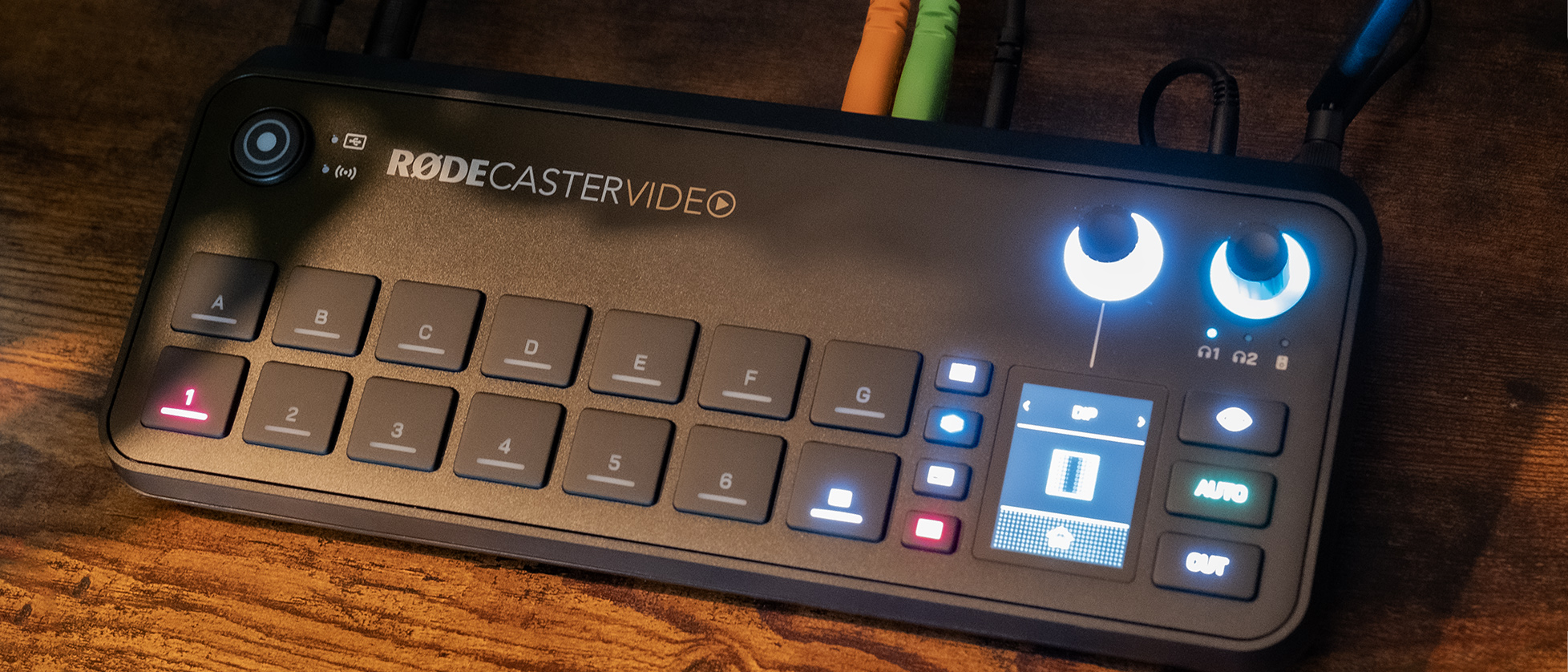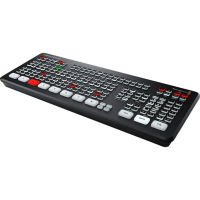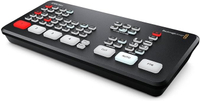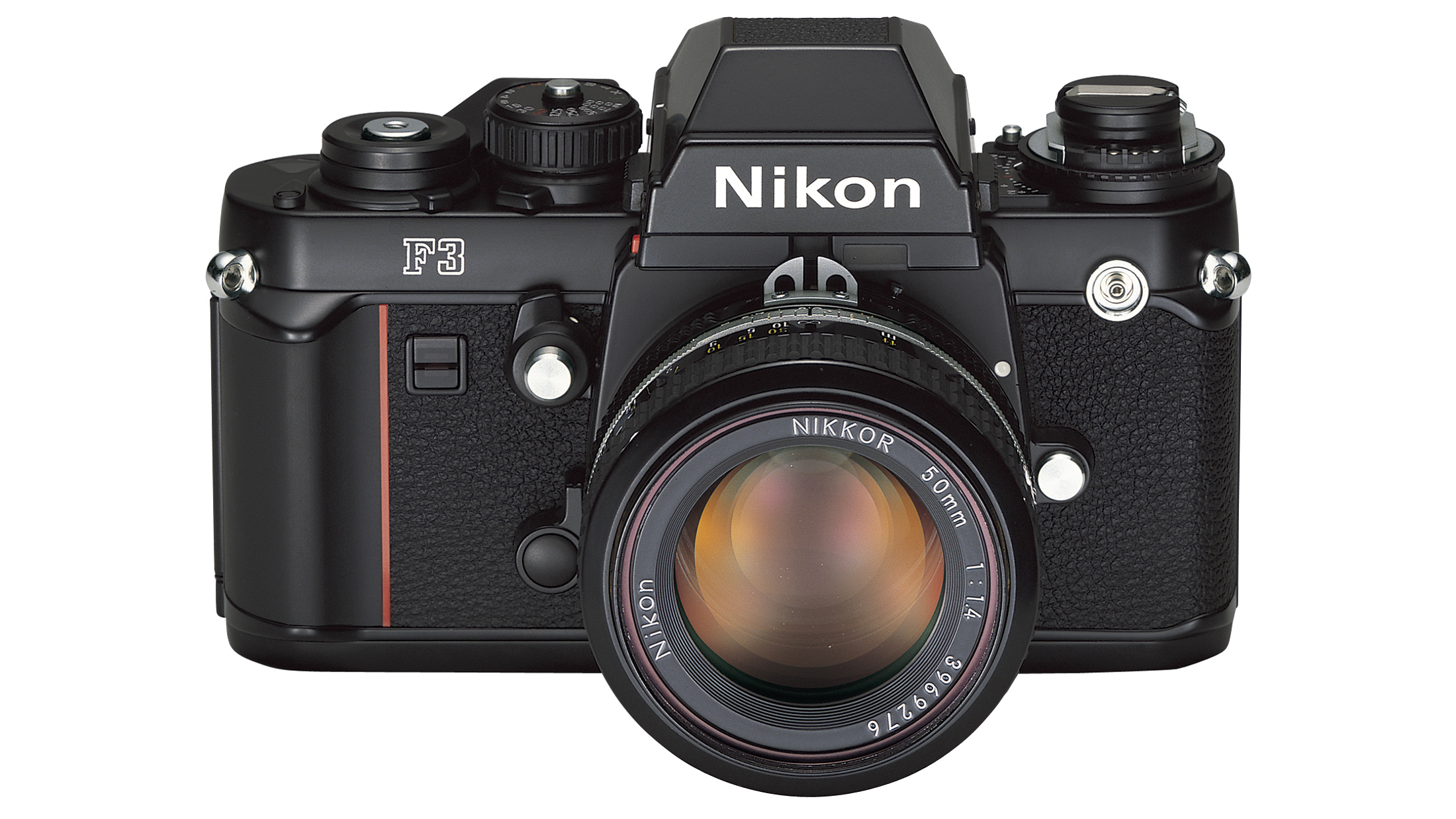Digital Camera World Verdict
With inputs and outputs aplenty, the Rødecaster Video can handle a large amount of source media, from incoming video in various guises, to audio, as well as graphics. The user experience is excellent, quite the feat considering everything this very capable device has up its sleeves.
Pros
- +
Excellent build quality
- +
All the IO you could need for almost any situation
- +
Bright and clear display for settings and information
- +
Powerful 8 core processor
- +
Auto mode is surprisingly good
Cons
- -
The wireless mic support is limited to certain Rode models
- -
No front-facing headphone socket
Why you can trust Digital Camera World
Trying to find the best video production console has been a challenging task in the past. There are a number of requirements that need to be met, from the simple number of video sources, to mixing in the audio in a controllable way, on to adding lower thirds and other graphics, alongside previewing outputs before sending them to a live stream. We’ve all seen broadcasts where technical hitches break the flow and that’s something I’m keen to avoid, especially when I’m trying to deliver content for a video or visual effects based audience.
I’ve had good results from devices like Blackmagic Design’s Atem Mini Pro switcher and its siblings but I was keen to see if the Rodecaster Video could become an all-in-one solution.
Rode has built a solid reputation with its solutions for audio, with excellent wireless mics (more on this later) for filmmakers and their well received podcasting gear. The Rodecaster Video looks like it may well be the solution to the user needing a compact and comprehensive controller.
Specifications
Processor: Octacore
Screen: 2” touchscreen
Inputs: 4x HDMI. 2 x USB-C, Bluetooth, Wireless, 2 x XLR combo
Outputs: 2 x ¼” headphone, ¼” Speaker outs
Price and availablity
The Rodecaster Video was launched in September 2024 for a recommended retail price of $1,199 / £999. That works out a little more than some of the competition but a fair price, considering the features and quality of components, alongside the excellent performance.
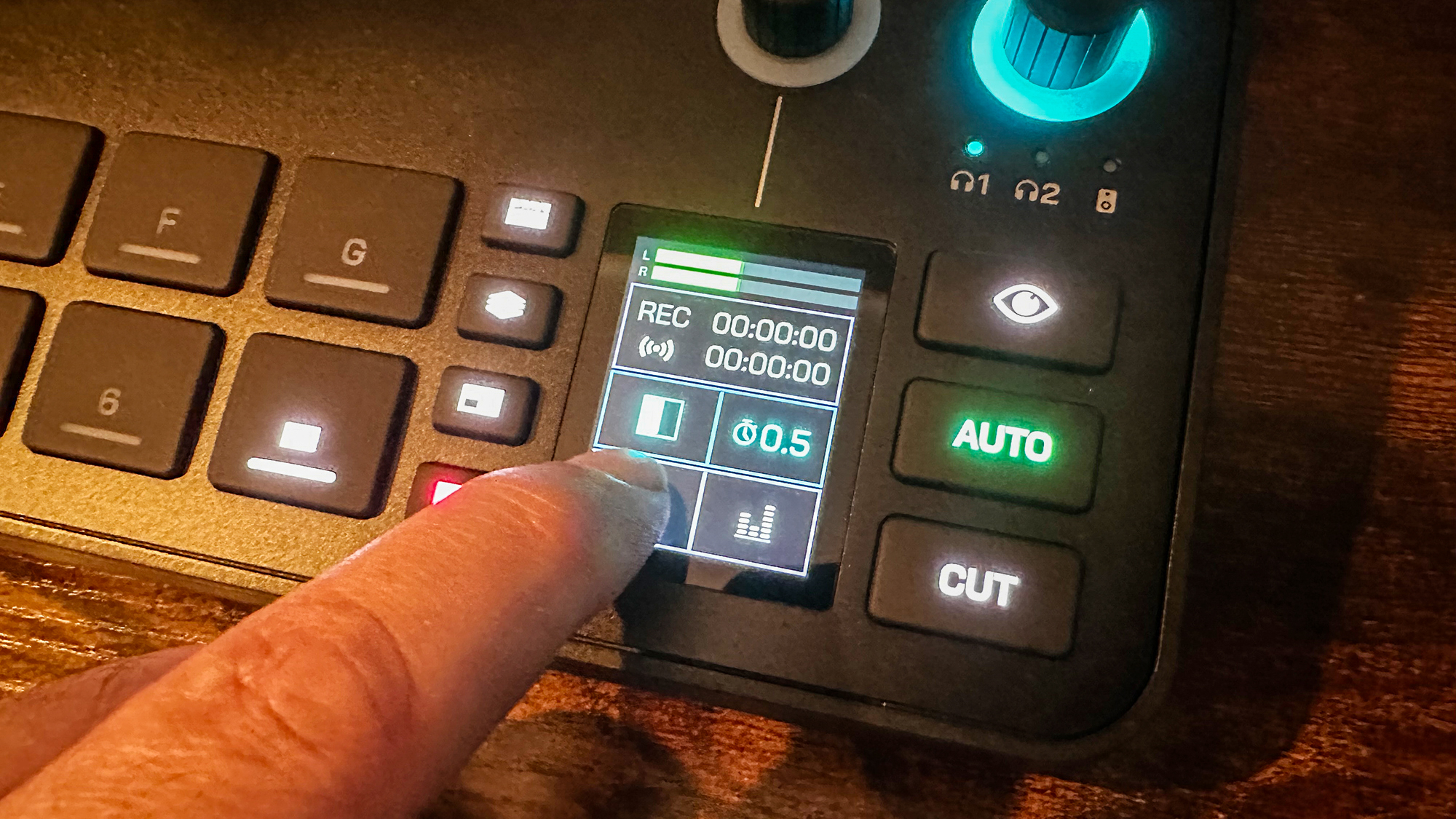
Build and handling
The Rodecaster Video has a huge range of in and outs on the rear, including four HDMI ins and a pair of outs, two Neutrik combo jacks, USB-C ports as well as wireless receivers and Bluetooth connection, allowing for multiple video and audio inputs.
The power enters on this panel as well, by way of a USB-C port and there are two ¼” headphone jacks sitting alongside a pair of ¼” speaker outputs. Personally, I’d like to have seen at least one headphone jack on the front of the device, as I like to use cans for multiple tasks, and that would save fishing around each time I want to listen to something else.
The top/front face is where all the control happens, dominated by the two rows of rubber buttons, used for selecting channels and scenes, as well as shortcuts to things like selecting overlays and keying options.
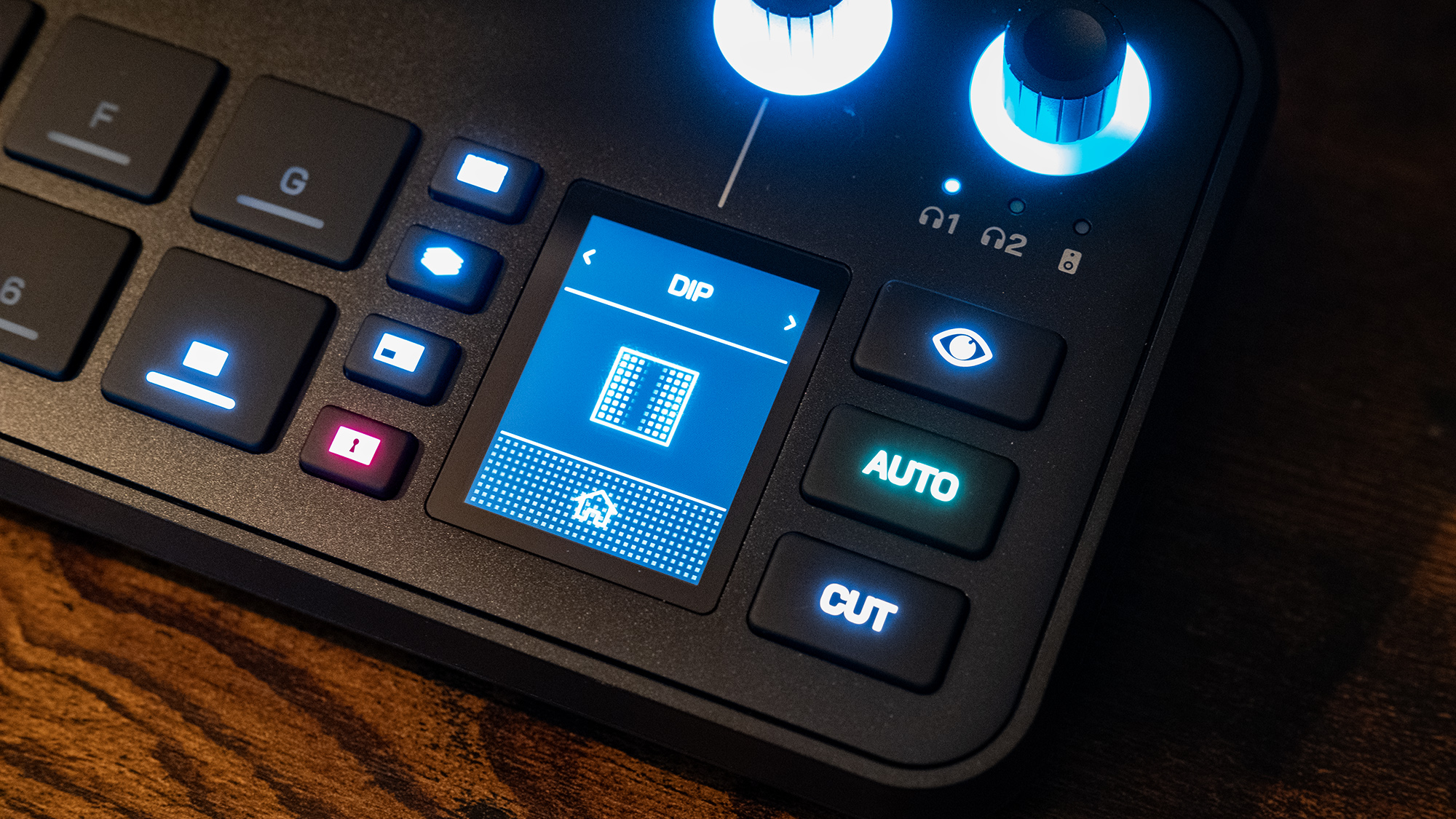
There’s also a bright touchscreen that is used for settings and deeper controls. Two rotary controls sit above, one for menus and the other for audio output levels, pressing to switch between the two headphone and speaker levels. The levels are shown by a growing ring of coloured LEDS, which works well but it is a shame you can’t instantly see the three together.
Everything looks and feels well built and, while I’m not a fan of rubber buttons, everything is nice to engage and that touch screen is both bright, clear and responsive.
You will need to download the Rode Central software for your Mac or PC, using which you can control the device, as well as setup scenes, update the firmware, and add media to your library.
Performance
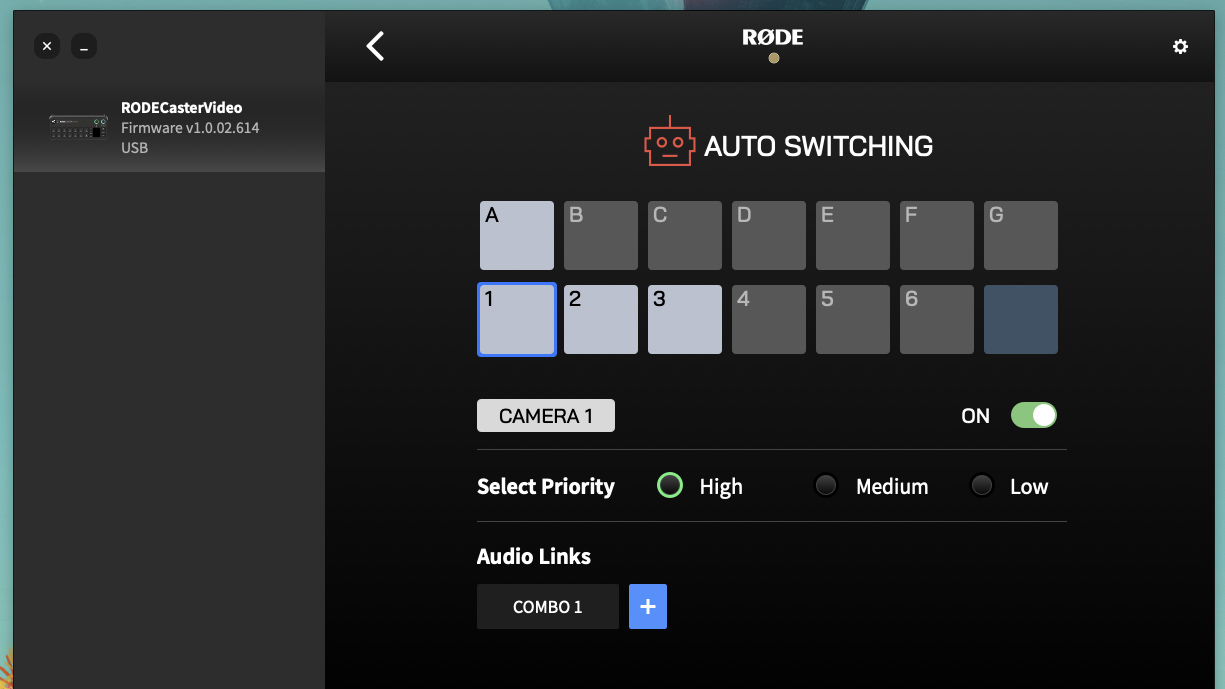
Setting up the Rodecaster Video is straightforward and takes just a few minutes. I had a particular setup in mind, with two cameras, a mic for my vocals and an output from my guitar amp, for an instructional final video on how to get certain tones from effects pedals.
Plugging everything in and setting up channels and audio levels for each was a doddle, using the mixer section of the Rode Central software.
At this point, I realized that a single operator is limited in what they can achieve as, for my use case, I’d need to interrupt the flow of my content to swap between the different sources. I could edit after the fact as you can record to an external drive with the different sources fully intact. Very useful. The scene system is a real winner for any user, allowing you to assign a number of different setups, with varying inputs, overlays, and audio mixes, for single-click recall at any time, making engaging live streaming simplicity itself for any operator, even single users.
Better yet is the Auto mode. I had thought this might be somewhat gimmicky, but in use, it turned out to work very well, making a laborious task quite enjoyable. Using this system you can select a source and set a level of priority for it, using incoming audio as a guide. Then I could let the device switch between a wide shot, close up on the guitar as well as mixing the audio of both voice and instrument.
Which brings me on to the audio quality. I’m a stickler for good audio, which as we all know is the most important element of a media package. The Rodecaster Video uses Neutrik combo jacks for all levels of incoming signal from phantom-powered mics, synthesizers or guitars etc. These inputs, along with excellent Revolution preamps, producing excellent signal-to-noise ratios.
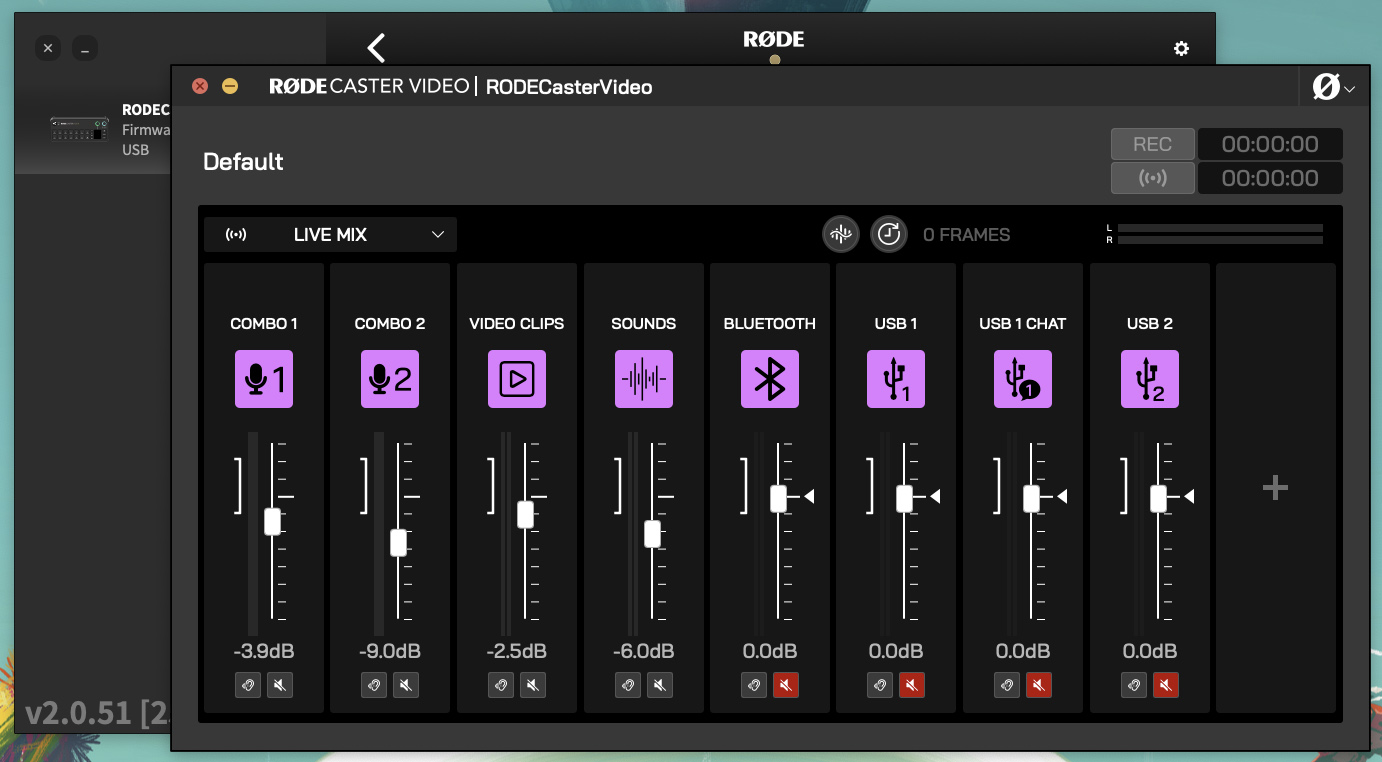
Each audio channel can also access a number of useful effects including compressors, de-essers and noise gates. All useful stuff but I’d like to see this expanded in future to allow VSTs to run, allowing more flexibility. I’d love to be able to use my preferred reverbs or delays. That said the audio quality is excellent and if I really needed to I could process the recorded audio through Logic or Davinci Resolve’s Fairlight page.
Audio can be sourced not just from the combo jacks but via USB, Bluetooth or wireless, using the two antennas that come in the box. I was excited by this, as I’ve used Rode’s wireless (and wired) mics for years and was hoping I could use either my Video Mic Pros, or Wireless Go set with it. Unfortunately, only certain models are supported, but it’s a feature I’d love to take advantage of, so it looks like I'll have to upgrade to the Wireless Go II, which is compatible.
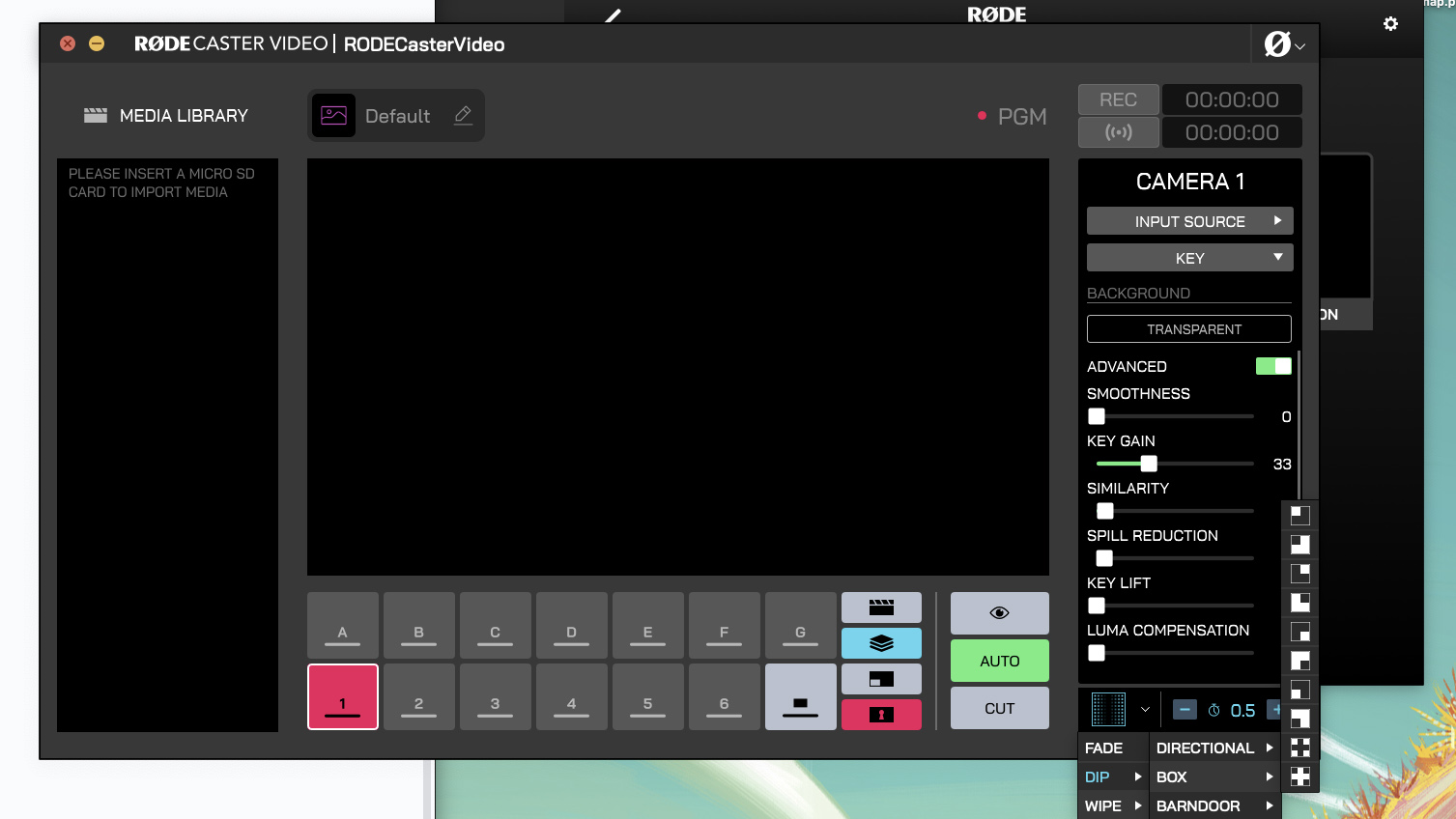
Although they have their place, I’m not always a fan of straight cuts and like to use transitions of which luckily the Rodecaster Video has a number, easily selectable, either in software or directly on the front panel. These range from wipes, dips and fades and are easily accessible.
There’s more on offer too. If you have a project needing keying you can chroma key your footage directly on the device, although to dial in your result Central is the place to do it, with controls for spill suppression, luma compensation and more.
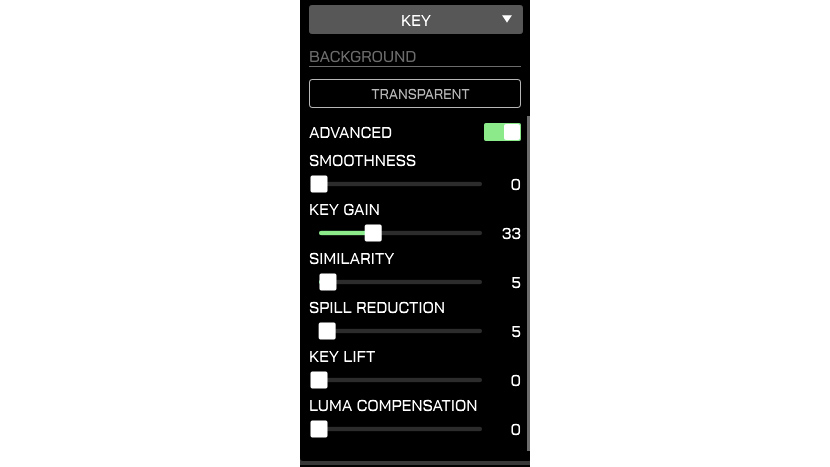
If you have graphics that you would like to use, for logos, lower thirds or splash screens, these can be loaded onto a microSD card, which is mounted via the rear panel. There’s a dedicated overlay button the front panel, so you can easily add them to your production with a single click.
A useful tool, especially for the streamers. Is the ability to preview on a second screen, before sending to your live feed. This is really handy and allows you to ensure what you make public is exactly what you’re expecting.
Verdict
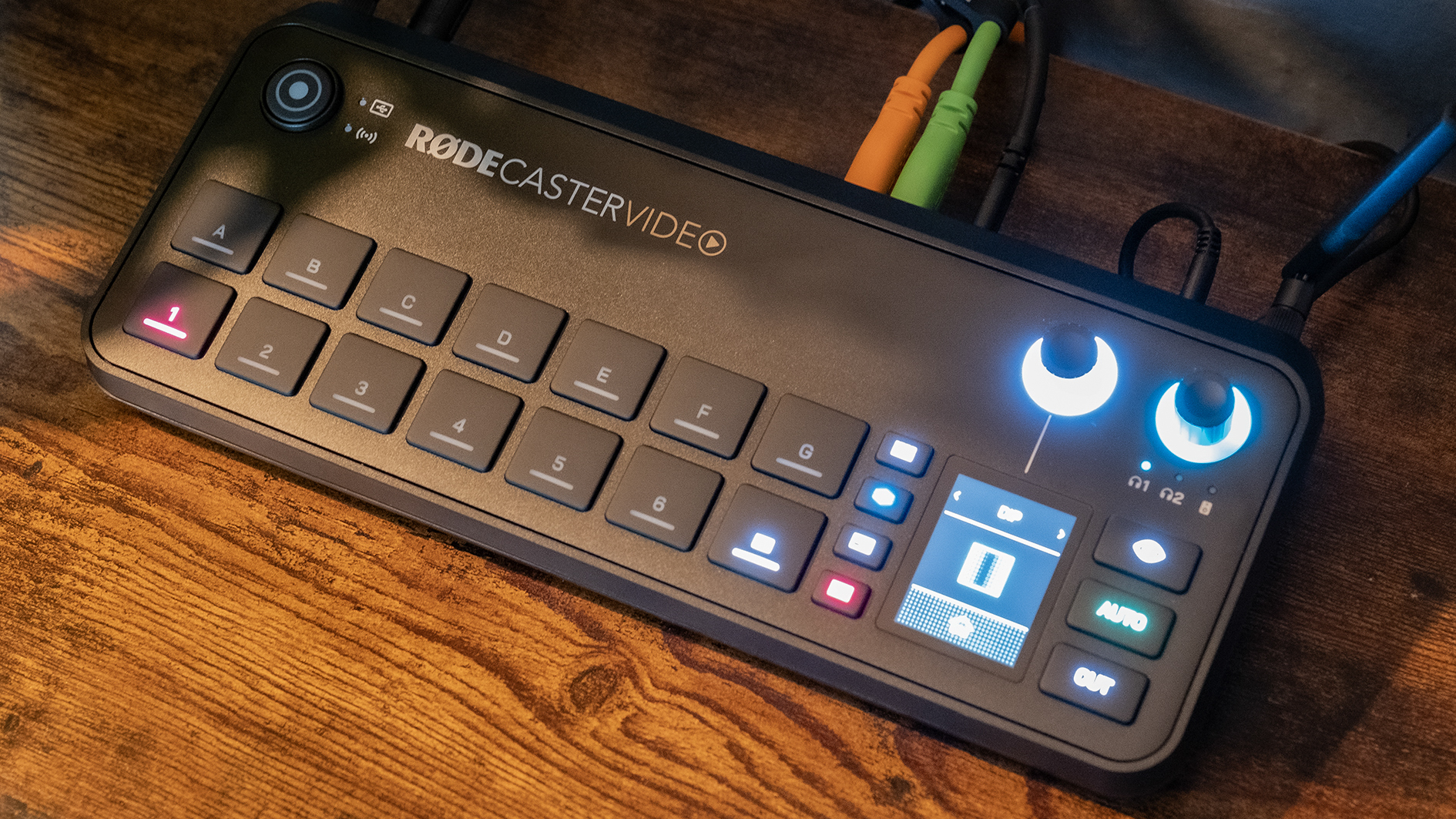
| Features | It’s packed with features for so many use cases, it’s hard to fault and could easily be the central hub for quite ambitious studio setups, as well as indie use. If only more mics were supported. | ★★★★½ |
| Design | The Rodecaster Video, is a solidly constructed, compat device, which feels rugged but looks slick and all the controls and ports feel confidence inspiringly solid. | ★★★★★ |
| Performance | I can’t fault this device’s performance. It handles multiple media sources with ease, including live chroma keying, audio mixing and overlays. | ★★★★★ |
| Value | I doubt that every user will make the most of all the features, so some of the investment will be a waste. That said it does everything so well it might introduce some unforeseen opportunities. | ★★★★☆ |
✅ Buy it...
- You are in need of a compact, all-in-one solution for multicam (and multi-audio) video projects
- You are a single-person operator or manage the production for a small team.
🚫 Don't buy it...
- You need wireless mics unless you have checked yours are definitely supported.
Alternatives
Blackmagic Design’s Atem Mini Extreme is the one to go for if keying is on your list of must-haves. They also offer smaller options for those with limited budget or space.
Blackmagic Design Atem Mini Pro is an extremely affordable production switcher that is a great starter console for those wanting to create live streams with two or more cameras.

Rob is Editor of 3D World and ImagineFX magazines and also works as creative director for his own studio, Pariah Studios, producing 3D animations and VFX for a variety of clients. When not at his desk, he can usually be found painting miniatures.
